Clematis "Princess Diana": description of the variety, tips for planting and care
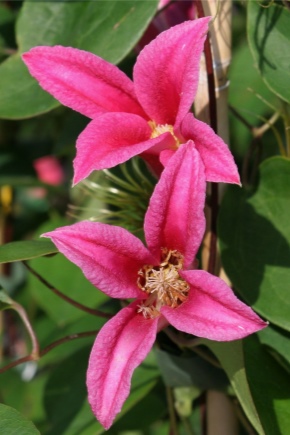
Today, late-flowering clematis are considered the most popular among their fellows. "Princess Diana" is a plant that is able to decorate the territory with its attractive appearance. Planting this liana is a great option for a garden, a summer residence or a country house, besides, caring for a bush is not difficult at all.
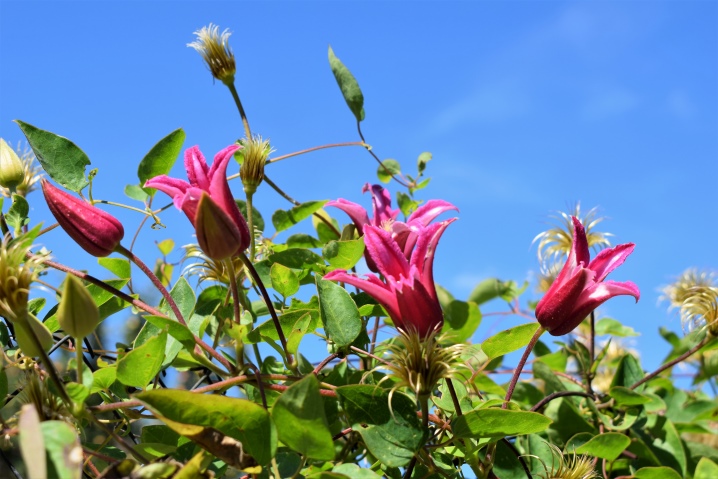
Description
"Princess Diana" is a Texas clematis variety, which is a liana with lush leaves and elegant buds. It was bred by British breeders in 1984. This plant is fast-growing. A strong bush can reach a height of 250 centimeters, it is characterized by herbaceous shoots and light green leaves.
Flowers are considered the pride of the Texas flora. Their color is usually deep pink or almost red. The color of the stamens is any of the shades of yellow. The flower reaches 5 to 7 centimeters in diameter. Moreover, its shape is similar to a tulip, since it is funnel-shaped.
The four petals of the Princess Diana clematis flower are characterized by pointed tips that point upward. Gardeners cannot but rejoice at the originality and uniqueness of this plant in the flowering phase. The bush is frost-resistant, so it can survive even 45 degrees of frost. However, do not forget that the plant is quite sensitive to drought and insufficient moisture.
The value of this representative of the flora is not only in its decorative effect, but also in its unpretentiousness, as well as the abundance and duration of flowering.
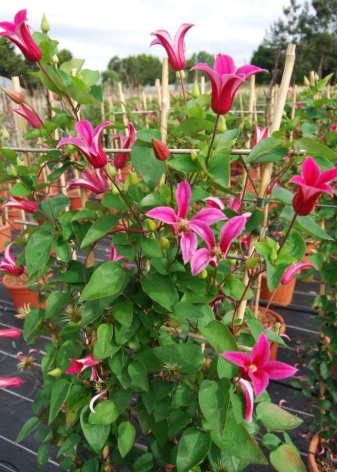
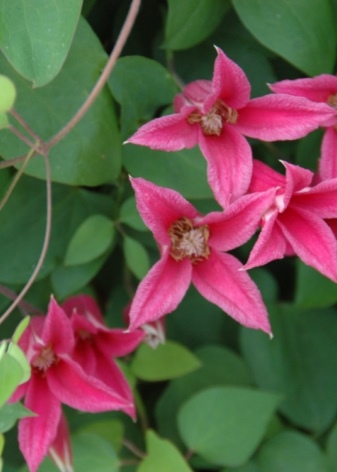
Landing features
In order to grow a beautiful clematis bush, you need to buy a high-quality seedling and properly care for it. Planting material "Princess Diana" has several types.
- Dormant cuttings with buds. They are sold packed together with substrate or peat. The cuttings are stored in a cool place. As soon as the planting material begins to germinate, it must be transplanted into a special container.
- Saplings that have shoots and leaves. This type of planting material must be purchased 14 days before planting. You also need to store seedlings in a cool place. It is worth taking into account the moment that they do not tolerate transportation well, since they often break due to their fragility.
After purchasing, it is worth moving on to choosing a site where the plant will grow. In this case, it is worth giving preference to well-drained soil. The place should be lit, but protected from the wind. The presence of partial shade is desirable, as the bush can get sunburn.
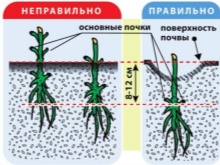
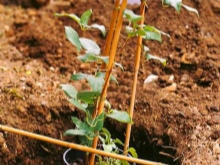

Despite the fact that this representative of the flora is considered unpretentious, it needs high-quality and fertile soil. Loamy, low alkaline soil is considered the best option. To improve the composition, you can add superphosphate, humus or ash to it. The procedure for planting "Princess Diana" includes the following stages:
- digging a hole 50 centimeters deep and 40 centimeters in diameter;
- spilling to the bottom of fine rubble or brick;
- filling with a layer of soil;
- planting a seedling and sprinkling it with a fed substrate.
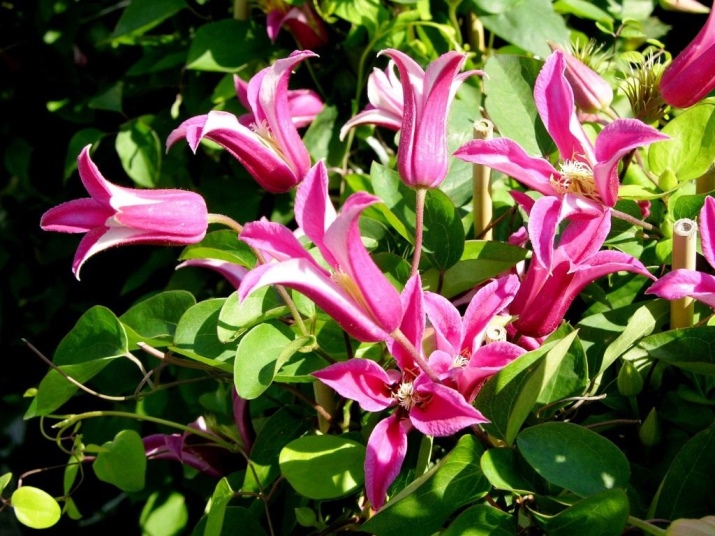

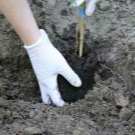

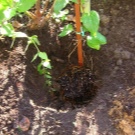
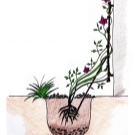
After planting, a young plant should be watered every 7 days. If the weather is hot, then irrigation should be carried out more often, namely, once every 5 days.Also, clematis needs to be regularly fed with organic fertilizers, as well as loosened.
Also, when planting this plant variety, it is worth taking into account the following nuances:
- in areas with a cool climate, clematis are planted in the spring, namely in April - early May;
- in hot regions, the plant should be rooted in the fall;
- the bushes of this representative of the flora should be placed at a distance of at least 100 centimeters from each other.
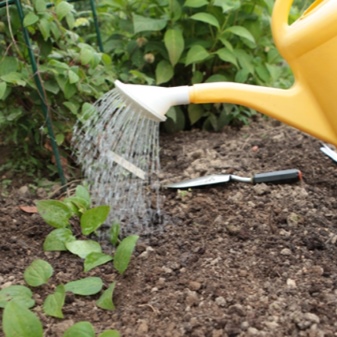

Care Tips
Clematis of this variety is very sensitive to a lack of moisture, so it needs some care. This plant does not tolerate drought. With a lack of liquid, a decrease in the size of flowers is observed, as well as wilting and falling of foliage. The amount of watering depends on the age of the bush and the weather. Young clematis should be watered once a week, and in hot weather, this should be done more often.
During the first 12 months after planting, "Princess Diana" does not need to be fed, as this can cause root rot. After this period of time, the plant must be fertilized according to the following scheme:
- in the spring, nitrogen fertilizers are applied and the bush is watered with milk of lime;
- during the budding period, clematis are fed with preparations with potassium;
- at the end of flowering, fertilizers with phosphorus can be applied;
- after trimming, use mineral compounds.


Thanks to the mulching of the soil, the structuring and improvement of the soil composition takes place. In the winter season, such a coating protects the roots of the plant from frost. In the absence of mulch, gardeners have to regularly weed and loosen the trunk circle. To avoid decay of the root system, the roots of the bush should be sprinkled with wood ash.
"Princess Diana" is a clematis of the 3rd pruning group. The shoots of the plant are sheared several times during the growing period. In the fall, you need to cut off almost the entire bush, you need to leave 10 centimeters of the plant from the soil surface. This event contributes to the fact that clematis will become lush and large in the spring.

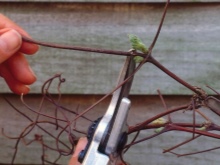
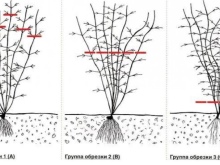
It is worth starting to prepare the vine for the winter cold when the first night frosts appear. The base of the plant is spud 0.1 meter. For this purpose, it is worth using soil from the garden, compost. The next step is to spray the substrate near the plant with the dissolved fungicide and dust it with ash. In order for the bush to survive the winter safely, it is covered with a wooden box and sprinkled with leaves.
Reproduction
"Princess Diana" is a clematis hybrid that is best not propagated by seeds. Getting seedlings is possible in several other ways.
- Bush division. This option is used infrequently due to its laboriousness.
- Layers of the horizontal type. This reproduction is not difficult. In this case, it is required to separate the young bushes from the maternal representative.
- Pinching shoots. The procedure is carried out in the spring. The last year's shoot must be pinched and placed in a container with fed soil. The placement should be deep so that liquid does not leak out during irrigation.
- Cuttings. A well-organized rooting process is a guarantee of a large amount of planting material.
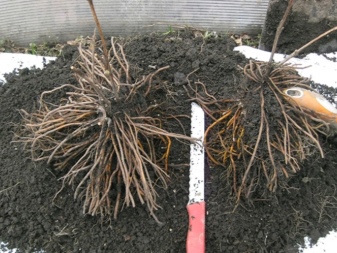
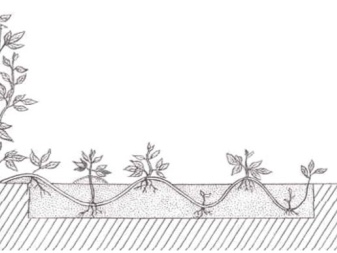
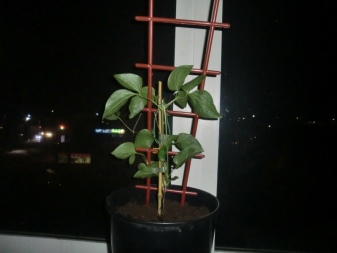

Growing clematis is a simple process. The plant is quite responsive to care, decorating a garden or a backyard.
Diseases and pests
Clematis "Princess Diana" is resistant to powdery mildew, but often suffers from fungal infections. NSWhen attacked by a fungus, the plant begins to wither, that is, lose its elasticity, dry out, wither. The focus of the disease is located in the roots. For this reason, the gardener should pay special attention to the correct watering and care of the bush as a whole.
Places that are affected by the disease should be eliminated in May. After this, the garden dweller needs to be watered with the dissolved "Fundazol" at the root. An overly affected part should be removed along with the soil, and then disinfect the earth.To prevent the appearance of gray rot and powdery mildew, you can treat the bush with an azocene as a preventive measure.
There are situations when "Princess Diana" is attacked by rust. This ailment manifests itself as brown spots on the leaves, as well as characteristic signs - their deformation and drying out. Bordeaux liquid, as well as copper oxychloride, will help to save the situation. In the last days of summer, clematis can get sick with necrosis, ascotichosis, cylindrosporiasis. Treatment of the plant consists in the use of copper sulfate.
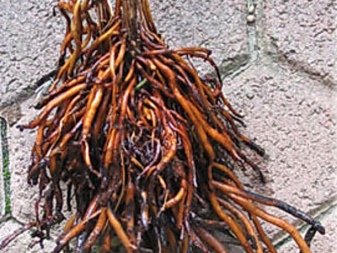
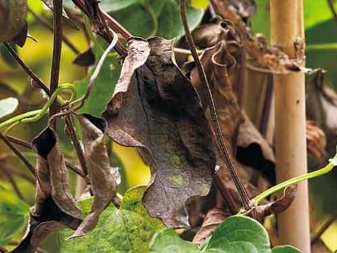
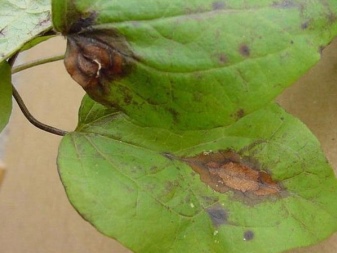
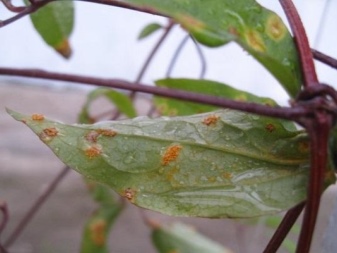
Each of the above diseases can change the look of the bush and even kill it, so at the first symptoms, you should immediately start treatment.
Examples in landscape design
Clematis "Princess Diana" is often used on site to decorate a gazebo or terrace. In addition to decoration, this vine is also used for other purposes: it can successfully disguise an untidy wall, an outbuilding, a fence or a fence. An interesting option is to use the bush as a horizontal ground cover representative. Clematis should not be planted near windows, shoots should not be directed to the roof: this will make it difficult for sunlight to penetrate.
Clematis of this variety can be called an interesting plant that can decorate any site. Time-consuming activities for caring for the bush are not required, so even gardeners without experience can grow it. This curly and unpretentious representative of the flora can be used not only for vertical landscaping, but also for growing in a container. The territory, which is decorated with tulip-shaped deep pink flowers, will always be admirable.
Reviews of people who grow liana on their site indicate that "Princess Diana" is a wonderful and very beautiful plant... Subject to the rules for care, clematis will become a real living decoration of the territory. This variety is able to win the heart of any gardener with its beauty and sophistication.
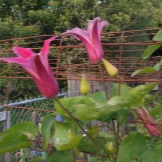
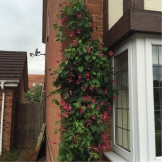
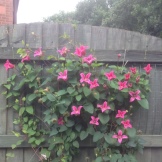
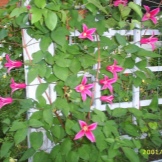
When choosing a bush with a graceful flower shape, you will not have to regret your decision.
An overview of the best varieties of clematis in the video below.







































































































The comment was sent successfully.